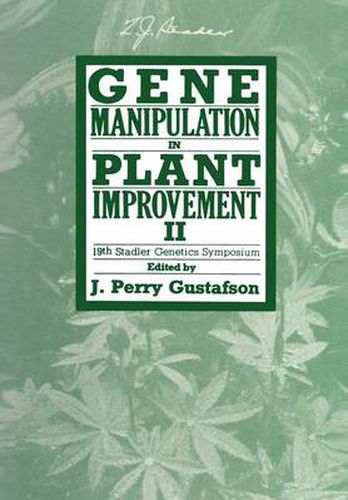Readings Newsletter
Become a Readings Member to make your shopping experience even easier.
Sign in or sign up for free!
You’re not far away from qualifying for FREE standard shipping within Australia
You’ve qualified for FREE standard shipping within Australia
The cart is loading…






There are clearly many directions in which the further development of the GUS gene fusion system can progress. Some of these have been outlined above, but others can be imagined. There are no reasons to limit our conceptions of the use of GUS gene fusions to analysis and manipulation of single genes. We can envision numerous marked genes - perhaps with several new fusion systems - giving valuable information about gene interaction, or population structure. The study of plan- pathogen and plant symbiont interactions can progress rapidly with simple quantitative markers for genes and individuals. We can imagine ways of using gene fusions to report on crop physiology or other complex phenotypes, thereby enhancing the accuracy and speed of screening. Introduction of the biosynthetic pathway for glucuronide detoxification by expressing genes for the UDP-glucuronyl transferases in plants may result in novel mechanisms for plants to deal with xenobiotics such as insecticides or herbicides. Synthesis of substrates, which until now has been performed chemicall- resulting in expensive compounds - can be done biosynthetically. This should make the system not only the most powerful gene fusion system for agriculture, but also the most accessible.
$9.00 standard shipping within Australia
FREE standard shipping within Australia for orders over $100.00
Express & International shipping calculated at checkout
There are clearly many directions in which the further development of the GUS gene fusion system can progress. Some of these have been outlined above, but others can be imagined. There are no reasons to limit our conceptions of the use of GUS gene fusions to analysis and manipulation of single genes. We can envision numerous marked genes - perhaps with several new fusion systems - giving valuable information about gene interaction, or population structure. The study of plan- pathogen and plant symbiont interactions can progress rapidly with simple quantitative markers for genes and individuals. We can imagine ways of using gene fusions to report on crop physiology or other complex phenotypes, thereby enhancing the accuracy and speed of screening. Introduction of the biosynthetic pathway for glucuronide detoxification by expressing genes for the UDP-glucuronyl transferases in plants may result in novel mechanisms for plants to deal with xenobiotics such as insecticides or herbicides. Synthesis of substrates, which until now has been performed chemicall- resulting in expensive compounds - can be done biosynthetically. This should make the system not only the most powerful gene fusion system for agriculture, but also the most accessible.